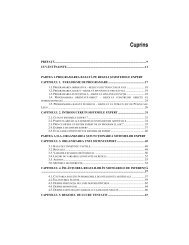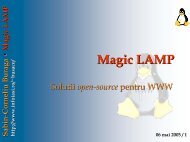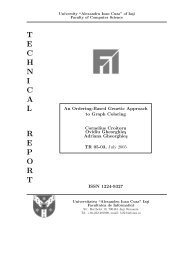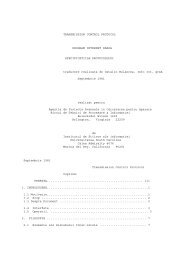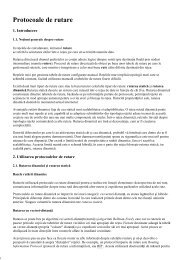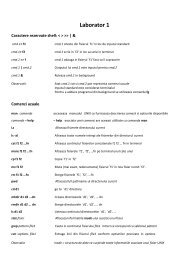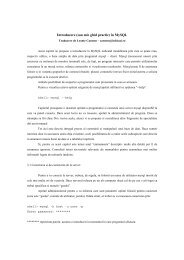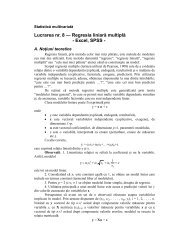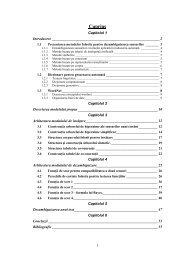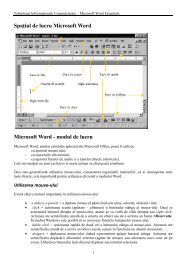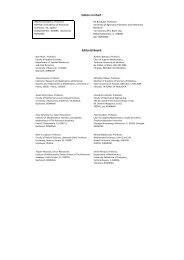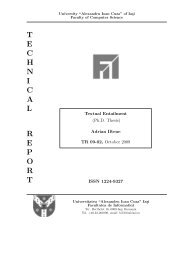Full document: PDF - Profs.info.uaic.ro - Universitatea Alexandru ...
Full document: PDF - Profs.info.uaic.ro - Universitatea Alexandru ...
Full document: PDF - Profs.info.uaic.ro - Universitatea Alexandru ...
Create successful ePaper yourself
Turn your PDF publications into a flip-book with our unique Google optimized e-Paper software.
• Jacobi Successive Over-relaxation exercises typical access patterns in finite difference<br />
applications.<br />
• Monte Carlo integration app<strong>ro</strong>ximates the value of π by computing the integral<br />
of the quarter circle y = √ 1 − x 2 .<br />
• Sparse matrix multiply exercises indirect addressing and non-regular memory<br />
references by multiplying sparse matrices.<br />
• Dense LU matrix factorization computes the LU-factorization of a dense matrix<br />
using partial pivoting.<br />
There are two versions of SciMark2: with normal data sizes and large data sizes.<br />
For the purpose of this paper, we only used the normal version of the benchmark.<br />
To obtain our training data, we modified GCC to output features for every un<strong>ro</strong>llable<br />
1 loop in the benchmark. There are 25 such loops in the SciMark2 benchmark.<br />
The following features were computed for each loop and saved for later use:<br />
Feature Name Explanation<br />
Loop Type (1 or 2) There are two ways GCC can<br />
un<strong>ro</strong>ll loops: if the loop tripcount<br />
is known at runtime<br />
(mostly for loops), GCC can<br />
apply a rather smart un<strong>ro</strong>lling<br />
algorithm, where the loop exit<br />
condition is tested for about<br />
n/f times, where n is the loop<br />
tripcount and f is the un<strong>ro</strong>ll<br />
factor. For other loops, the<br />
test condition must be replicated<br />
with each un<strong>ro</strong>ll.<br />
Instruction count The total number of instructions<br />
in the loop. This is the<br />
most useful parameter.<br />
Branch count The number of branches in the<br />
loop.<br />
Memory reads How many memory reads are<br />
performed in the loop body.<br />
Memory writes How many memory writes are<br />
performed in the loop body.<br />
Function calls How many functions calls<br />
there are in the loop.<br />
We then computed which one of 1, 2, 4, 8, 16, 32, 64 and 128 was the best un<strong>ro</strong>lling<br />
factor for each of the loops. To do this, we measured the benefits in terms of time for<br />
each loop and for each un<strong>ro</strong>ll factor.<br />
1 Due to technical constraints, GCC may not be able to un<strong>ro</strong>ll certain loops at all.<br />
3



